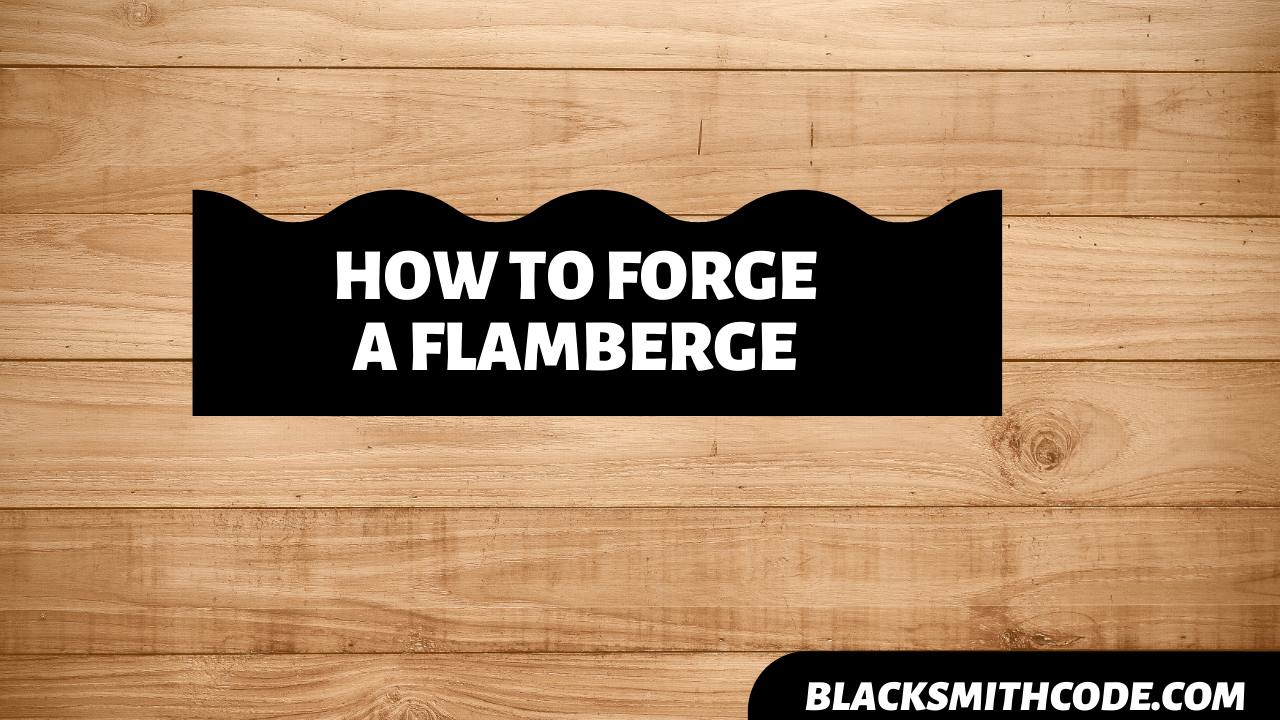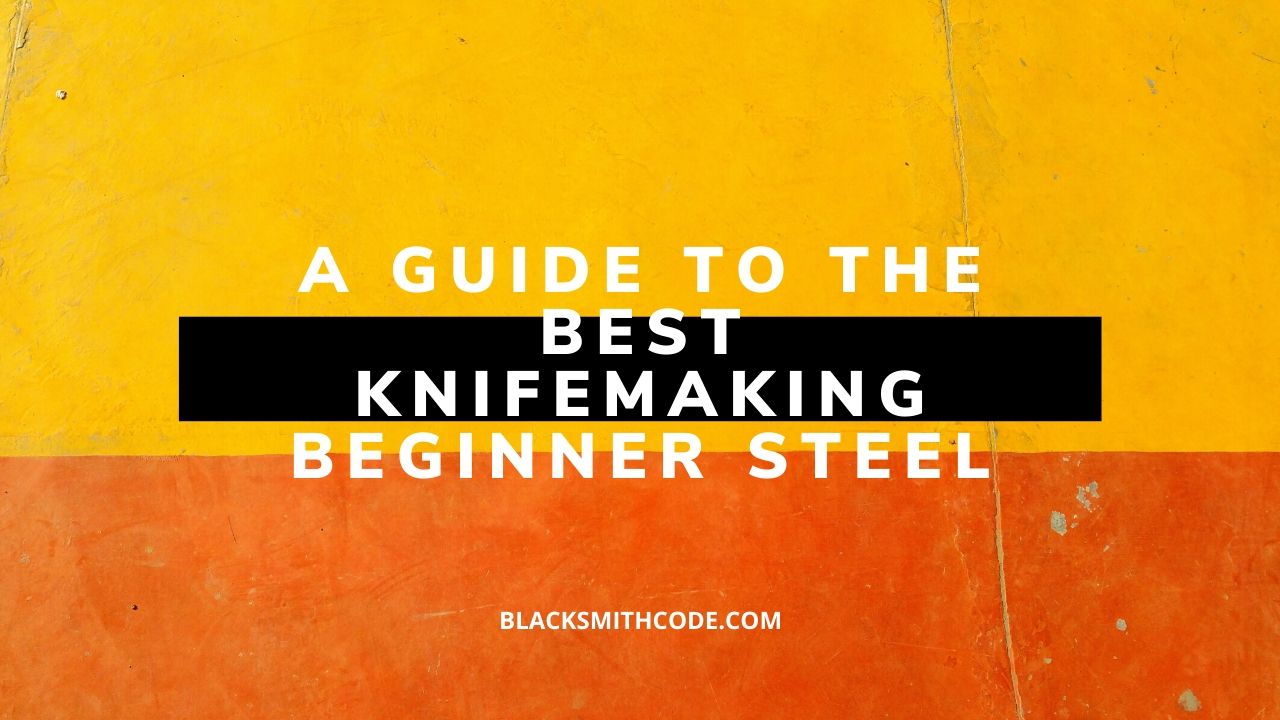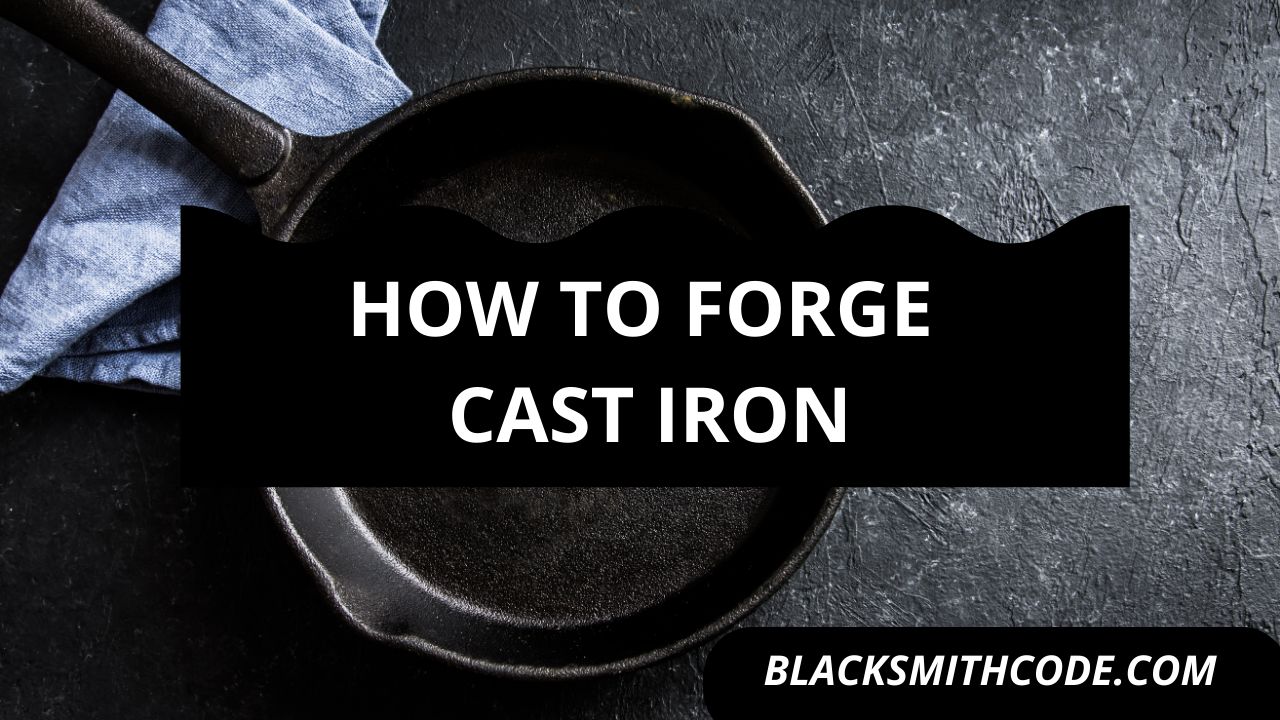Do you know forging weapons is one of the core skills of blacksmiths? A flamberge is one of the most artistic swords blacksmiths make. It is artistic because the blade of the sword takes the shape of a flame. You can up your blacksmithing game by learning how to forge a flamberge.
A flamberge is an undaunted sword with unique designs. The wavy or flame-like shape of the sword is unique and creative. However, this shape does not undermine the quality of its action.
A flamberge remains one of the most dependable weapons of the medieval age. Like it was then, the sword can still stand in as a perfect weapon.
The forging process of the sword is as simple as its appearance. If you have prior knowledge of how to forge swords and knives, this should be easy for you. However, it doesn’t matter if you don’t have a prior idea of sword making.
As long as you understand the basic blacksmithing techniques, the stepwise guide below will guide you through the forging procedures of a flamberge.
Instructions on How to Forge a Flamberge
Step 1: Gather Your Materials
The first step to take while attempting to forge a flamberge is getting your tools and materials ready. For this process, you need a steel bar, and the materials you would be using for the handle.
Step 2: Measure and Cut
We would assume that the breadth of the steel bar you are using is exactly the width you want the blade to take. However, you have to measure and also make sure that the length is what you want.
If it is not, you can easily measure and cut your desired length from the bulk of the steel bar. You should also remember to mark the part of the steel that would serve as the handle and where the blade will terminate.
Step 3: Heating
Now, it is time to put your forge to use. Rightly place the steel bar in the forge and let it heat up to orange color. You must ensure that its temperature is up to a workable level to make the hammering easier.
Step 4: Hammering
The hammering process of a flamberge is quite rigorous, just like the forging process of other swords. You are hammering out two parts of the sword. You would hammer to differentiate the blade from the handle.
Quick Steps
- Retrieve the steel bar from the forge and hammer down to flatten the steel.
- Identify the side that would form the handle and hold the other end with a tong.
- Hammer inwards to make the part that would form the handle thinner than the rest of the blade.
- You should form a shoulder that will serve as the border between the blade and the handle.
- Return the billet to the forge as often as required to keep the temperature at a workable level.
- Hammer the blade part of the steel downwards until it becomes completely flat. You need it to attain the flatness of a sword blade.
- Once the steel bar is flat enough to be called a sword blade, start forming the tip.
- The tip of a flamberge is slightly thinner than the rest of its body. You should thin out the tip with your hammer and make it pointed.
- Once you achieve this, you can move on to forming the shape of the blade.
Step 5: Form the Shape
One of the observable features that differentiate a flamberge from other types of swords is the shape of the blade. The blade of the flamberge usually takes the shape of a flame.
Quick Steps
- Return the steel blade to the forge and heat it to the desired temperature.
- Clamp the tip of the blade on the vise and hold it tightly.
- Hold the other end of the steel bar with your tongs and twist gently.
- The temperature of the blade will allow you to make an easy twist.
- Clamp the blade to the vise at another point and repeat the process. Keep this on until you get your desired flame shape.
Step 6: Grinding
The grinding process smoothens the edges of the blade to make it flat, uniform and smooth. Make use of your grinder for this process.
Step 7: Heat Treatment and Sharpening
Heat treatment will add the desired texture, hardness, and strength to the blade. Likewise, the sharpness of the blade will determine if it is worthy of being called a sword.
Quick Steps
- Heat the blade to a workable temperature and rapidly quench it in quenching oil or water.
- Repeat the process about two or three times until you have your desired texture.
- You can now harden the steel by heating it to about ¼ of its workable temperature and cooling it slowly at room temperature. Repeat the process for about 2 to 3 times.
- Use suitable sharpening technique to bring the blade to your desired sharpness.
- You can fine-tune the blade of the sword with a grinder and a file.
Step 8: Fix the Handle and Finish
Use your desirable handle and add some finishing touches to the blade. You can use sandpaper to smoothen the edge of the blade.
FAQs on How to Forge a Flamberge
Question
Can you forge a flamberge with Damascus steel?
Yes, Damascus steel is one of the best materials for forging a flamberge because of its strength and other properties.
Question
Can I forge flamberge from scrap metals?
Yes, you can forge a flamberge from scrap materials. This possibility is the reason why a flamberge is considered to be an economical sword.
Question
How long does it take to forge a flamberge?
You can forge a flamberge in about 1hr or less. The only rigorous and time-consuming process of all the steps is the hammering process.
Video on How to Forge a Flamberge
Warnings and Precautions
- Use protective and safety materials throughout the process.
- Ensure proper ventilation in your workshop.
- Use tongs to hold hot steel to avoid burns.





